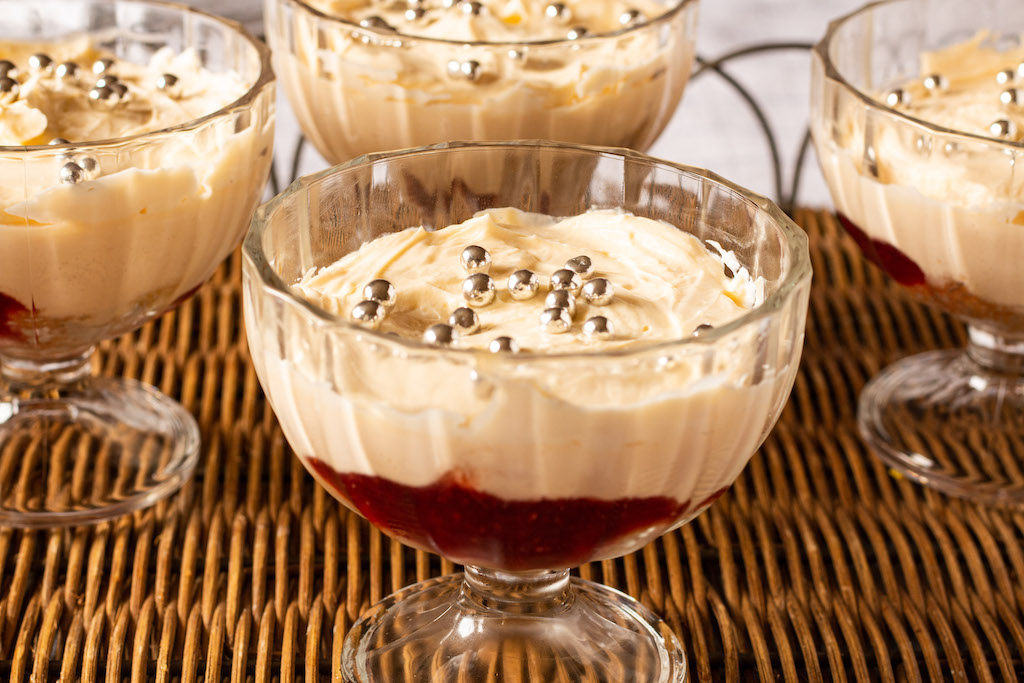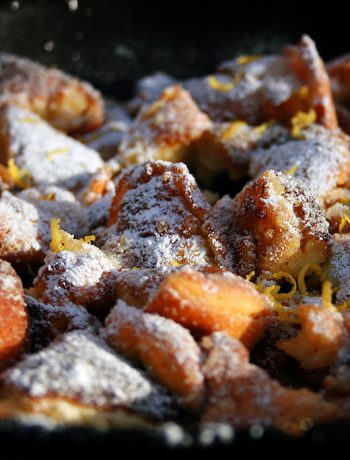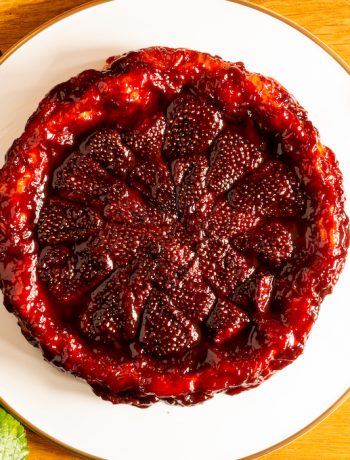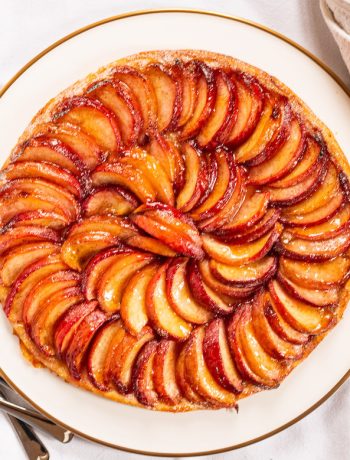‘Trifle’ is an English term (derived from the French ‘trufle’) to describe something that is very easy, e.g. “It was a trifle to cut the lawn once Dad had fixed the effing mower.” This idea of something very easy to execute is exactly where the name of trifle for dessert comes from. Trifles are supposed to look impressive, but be ridiculously easy to prepare. If your trifle is getting complicated (or involved molecular nonsense), you are missing the point. The term ‘trifle’ as a food came into use in 1585 when the prolific mansplainer Thomas Dawson wrote The Good Huswifes Jewell and included a recipe under that name. The recipe was written as follows:
“Take a pint of thicke creame, and season it with suger, and ginger, and rosewater: so stirre it as you would then haue it, and make it luke warme in a dish on a chaffingdish and coales: and after put it into a siluer péece or a bowle, and so serue it to the boorde.”
Thomas Dawson
The Dawson recipe supports the notion that trifles started out as fools, which are super-simple desserts of creamed fruit – the Dawson recipe appears to be served warm. By the mid 18th Century, the trifle had become a layered affair of boozy cake, jam or jelly, custard and cream, most often served in glass bowls to show off the layers – this is the trifle we know today.
There are an awful lot of variations on the recipe for trifle. For the cake, some use a classic sponge, and others use ladyfinger biscuits. The fruits can be whole or chopped fruit, and both jelly and jam can be used to hold it together. The custard is always custard, but the cream can be made as a Chantilly cream or whipped through with more fruit. Trifles are best topped off with something crunchy like nuts or sugar sprinkles, but artfully arranged fruit or glace cherries are also common.
The recipe we have given here is from Simon Hopkinson’s The Prawn Cocktail Years, and can be relied on as a good, basic trifle that has not wandered too far from the path of authenticity. Hopkinson used jam, suggests that jelly is “an abomination,” and says that whole fruit is too tart to balance everything else out.
Trifle
Ingredients
- For the sponge:
- 3 eggs, weighed
- The same weight of the eggs in softened butter, caster sugar and sieved self-raising flour
- 1.5 tsp baking powder
- To complete the base:
- 1 tbsp cognac
- 5 tbsp sweet sherry or marsala
- Raspberry jam (about half a jar)
- For the custard:
- 3 egg yolks
- 30g (2 tbsp) caster sugar
- 150ml double cream
- 150ml milk
- Dash of vanilla extract
- For the topping:
- 275ml double cream
- 1 tbsp icing sugar
- Sprinkles (see notes)
Instructions
Begin by making the sponge.
Preheat an oven to 160˚C. Cream the sugar and butter in a stand mixer. Mix in the dry flour, baking powder and eggs. Pour into a greased tin and bake in the oven for 25 mins. Once done, cut into cubes, and freeze half of it for another day.
To complete the base:
Divide the sponge between some glass bowls, pour over the alcohol and let it soak in. Warm the jam until it flows and then tip it over the boozy sponge.
To make the custard:
Whisk the eggs and sugar together until pale. combine the milk, cream and vanilla in a pan and bring to the boil. With off the heat and let it cool. Strain the milk mixture into eggs, whisk again and transfer back to clean pan. Heat gently to 80˚C. Pour the custard over the sponges and jam and leave to set in the fridge for 4 hours.
To make the topping:
Whisk the cream and sugar until stiff. Spoon and swirl over the set custard. Return to the fridge for 1 hour. Cast over with sprinkles and serve.
Notes
There is some snobbery attached to sprinkles. Ignore it and use what you like.








No Comments